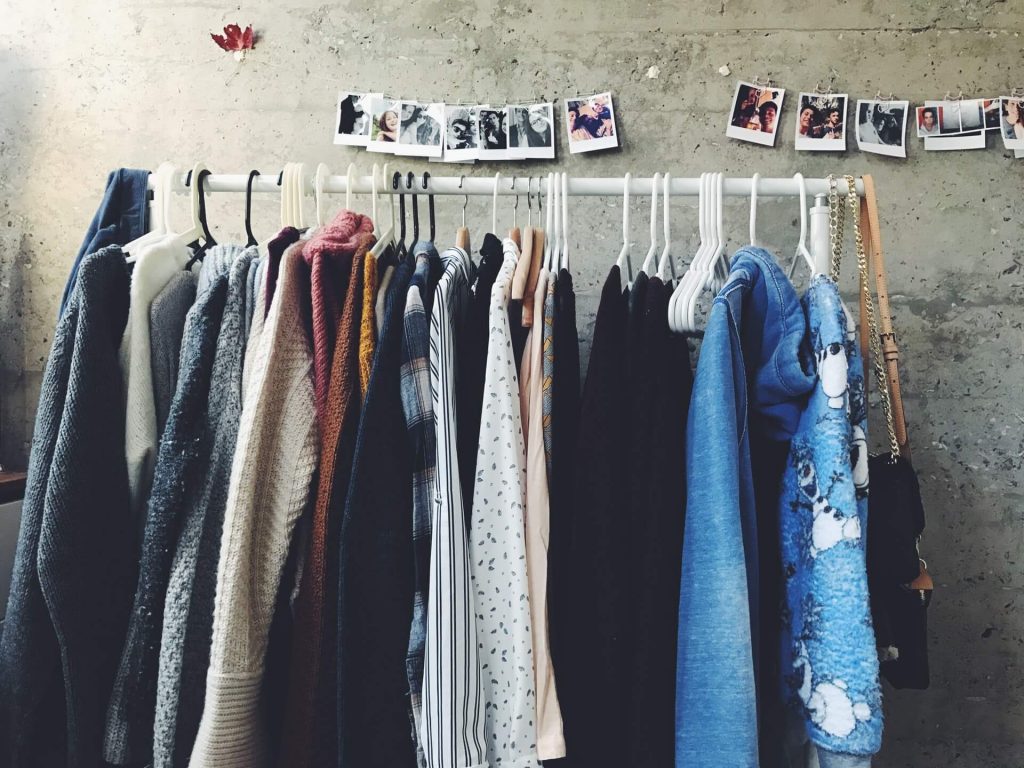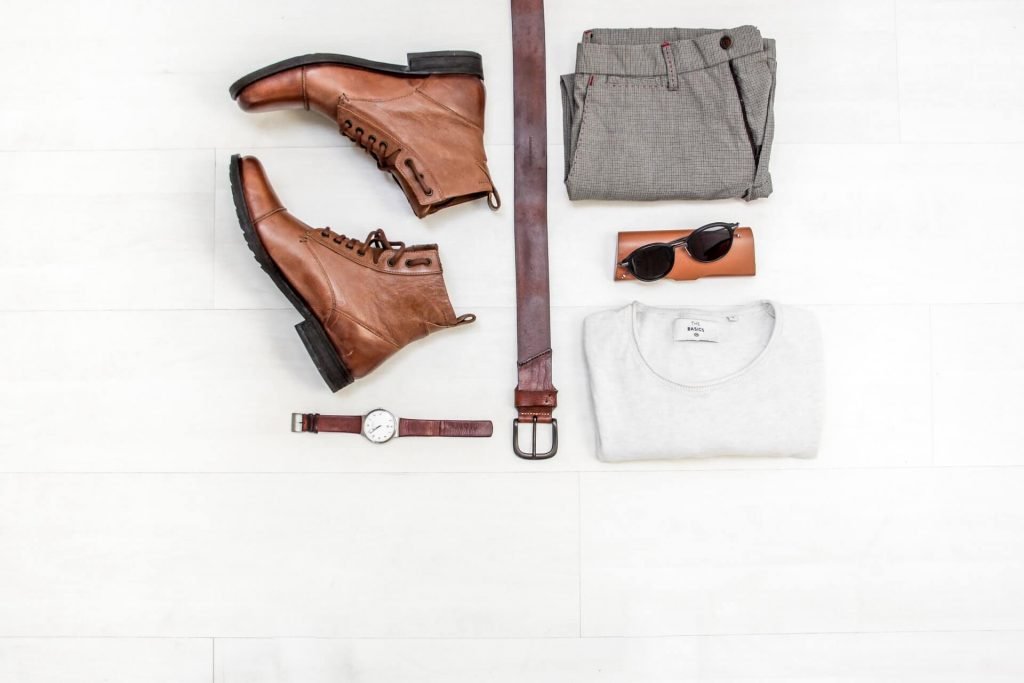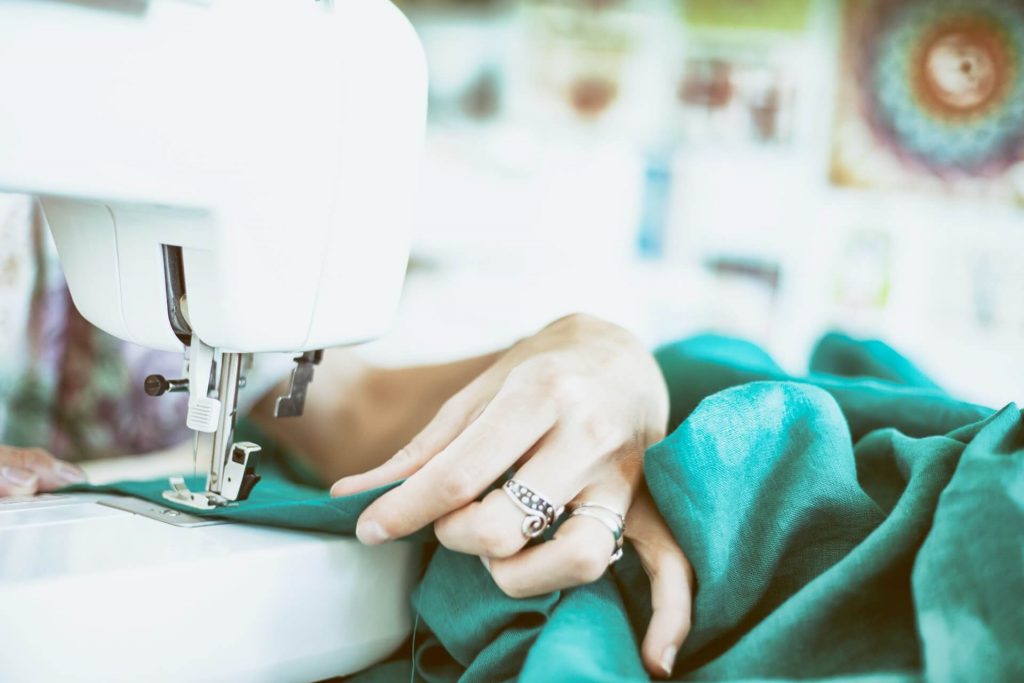Like any global industry, fashion has a multitude of far reaching environmental effects.
Proper materials sourcing, manufacturing methods, transportation, waste management and clothing longevity are just some of the challenges facing the fashion world.
And understanding the impact of our fashion choices is an important step in learning to live more sustainably.
Here are just a few ways to embrace sustainable fashion.
Understand Want vs Need
Sometimes clothes really do need replacing, but too often we buy simply because we can.
Before splashing out, take a moment to decide whether you really need that new pair of jeans or another pair of shoes. If you can reasonably get by without it, then maybe you should!
Try to avoid impulse buying as much as possible. If you didn’t need it before you walked into the shop, you probably don’t need it now.
Hop over to my post on Sustainable Shopping for more ways to reduce!
Embrace Hand-Me-Downs
There’s a bit of a stigma around hand-me-downs, but they are hands down one of the best ways to refresh your wardrobe sustainably.
Whether you’re giving or receiving, hand-me-downs are a great way to prolong the life of a piece of clothing that would otherwise be thrown out.
So, reach out to friends and family about swapping old clothes. You never know who else might love what you’re willing to let go.
This is a particularly good tip for families with young kids, as they’re constantly out-growing their clothes.

Second-Hand Clothing
If there’s one type of shopping I am all for, it’s the second hand variety!
I have a passion for second-hand shops, thrift shops, op shops (or whatever you call them where you live).
They’re a great place to look before you go spending big bucks on expensive designer labels.
You can often find high quality clothing from well-known brands, in great condition, and at a fraction of the normal retail price.
Add to that the blend of styles, old and new that you find in these shops, and you can make some really unique purchases.
Nowadays a lot of us dress the same, so doing your shopping in a second-hand store can provide an opportunity to create your own style.
Sustainable Fashion Brands
You won’t always be able to find what you need second hand. And in these cases, it’s fine to go looking for new products.
It is important however to do a bit of research on the brands and stores that you’re buying from. Some products might be cheap and look great but their company’s environmental policies could leave much to be desired.
I would always prioritise buying locally made products where possible, but even some bigger multinationals have some eco-friendly options.
Companies like Patagonia and Levi have long been committed to reducing their environmental impact. And there are a host of smaller companies with even better production practices.
But there are also some companies you should be wary of and others you should avoid entirely. Good On You and Buycott are two great resources you can use to find out more about a company’s environmental policy.
Things to look out for while researching include; the companies carbon footprint, waste management, materials policies, where their clothes are manufactured, as well as their human rights record.
The All-Weather-Wardrobe
Don’t get me wrong, we all need a winter coat and some summer swimsuits.
But particularly if you live in a country with a relatively small change in seasonal temperatures (like Ireland!), it’s not unreasonable to look for clothes that can be worn all year round.
When it comes to sustainable fashion, less is more.
You probably don’t need a different pair of jeans for each season or a different t-shirt for every type of weather.
A lot of clothes are adaptable and can be paired with other pieces depending on the weather.
Similarly, try to buy clothes that you can wear in many different situations.
Instead of buying that extra formal outfit you’ll only wear once in a blue moon, how about going for something that can be dressed up or down depending on the occasion.

Avoid Fast Fashion
It seems like every week there is a new “must have” fashion item in the shops.
Fast fashion is a huge problem for the environment as it inevitably leads to cheap, low quality clothes being bought, used a few times and then thrown out when the next big thing arrives.
Not only are these clothes poorly made, but they often come from companies with questionable human rights and environmental policies.
Do yourself a favour and don’t get drawn in. Decide whether this item is really something you need and will use long term.
If so then try to buy a sustainably made, higher-quality version and not the first cheap and cheerful one you see on the high street or online.
It might be more expensive, but higher quality clothing will last you far longer and won’t need replacing after 3 months.
Try Tailoring
One common reason for going shopping is that your current clothes no longer fit you the way you might like.
That’s fair enough if your clothes are now too small, but if you’re replacing something that’s too big, consider tailoring it to fit.
You can pay a professional to do this or even have a go yourself, it’s a lot easier than you might think. Here’s a YouTube video demonstrating some basic home tailoring!
This tip can be used in conjunction with your second-hand purchases, allowing you to get a great fit at a lower price.
Take Care of Your Clothes
Prolonging the life of your clothes is the best way to reduce the amount of new and/or unnecessary purchases you have to make.
When washing, be sure to use cold water and natural detergent, as well as allowing your clothing to air dry. This will ensure that they are being cleaned as gently as possible.
Also, try not to over-wash your clothes. If it’s not dirty don’t wash it!
For proper storage, ensure that your wardrobes are clean and dry to prevent mould and damage over time.

Reuse and Repair
Inevitably clothes will get worn and damaged, and there’s nothing wrong with replacing items that are unsalvageable.
But before you do, see if the clothes are repairable, or if they could be repurposed for something else.
Reducing waste is one of the most important aspects of sustainable fashion. And as such we all need to be making more of an effort to reuse and repair clothes instead of throwing them out.
You can always bring items to a tailor for professional repairs, but for smaller quick fixes all you really need is a needle and thread, or a basic sewing machine for larger items.
And even if the piece of clothing isn’t fully salvageable, maybe it can altered to fill another need.
Old jeans can be cut into shorts, shirts into t-shirts, and old worn clothes make great comfy pyjamas and loungewear.
The possibilities are endless and will allow you to get creative while saving money.
Donate to Charity
Even with your new-found repairing, and re-purposing skills, you will occasionally have clothes that you no longer have any genuine use for.
When this happens, and providing the clothes are still in usable condition, the best thing you can do is donate them.
Just like hand me downs, your donated clothes can be a great help to another person in need.





